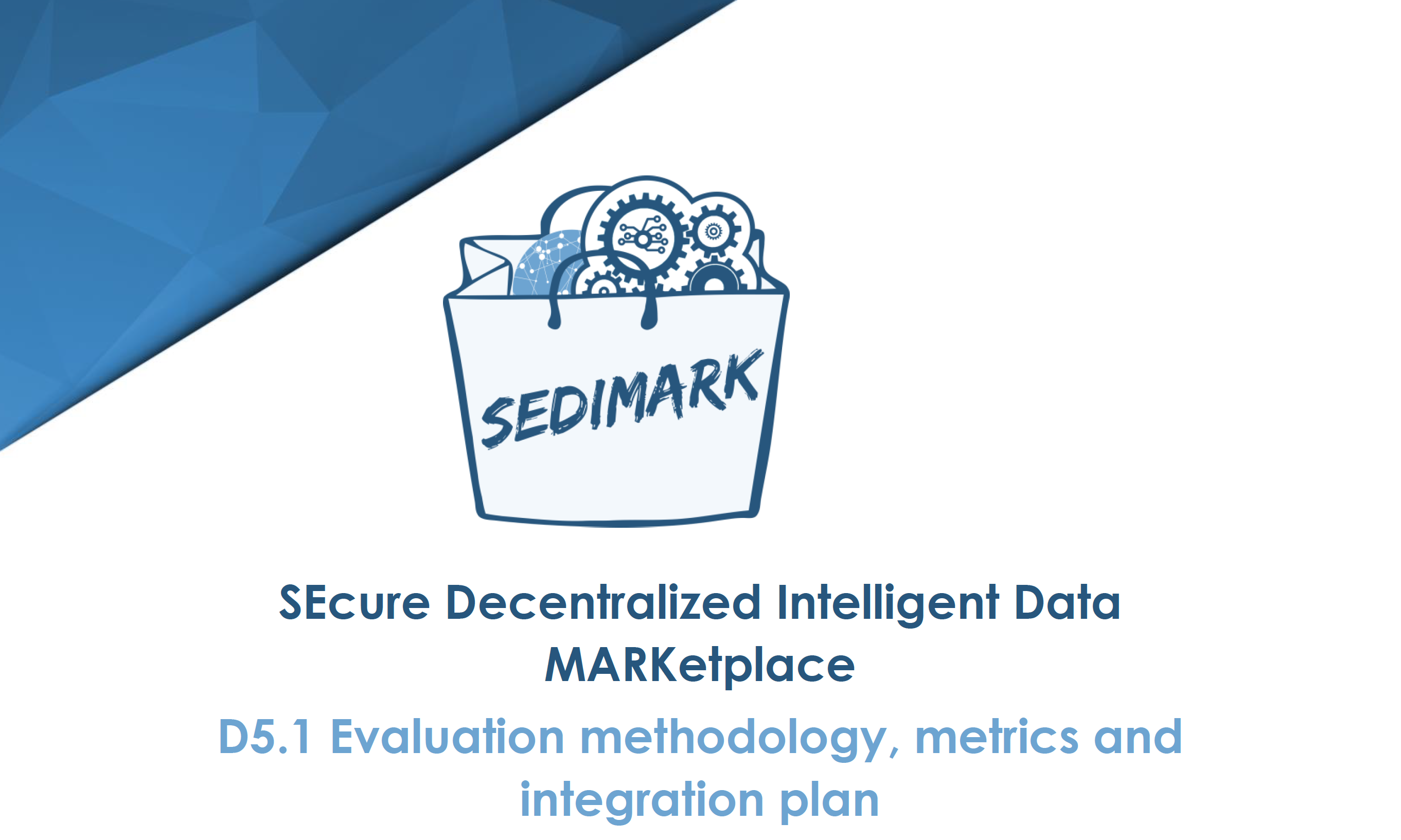
The document is the first deliverable of WP5 and reports the results of T5.1 activities aimed at recommending an evaluation methodology, performance metrics, and a timetable for the integration of the SEDIMARK platform according to the rules of decentralization, trustworthiness, intelligence, data quality, and interoperability. This deliverable is important because it defines the evaluation methodology, monitoring approach, and efficiency of what is being built, as well as the system validation through real pilot demonstrations. In order to assess the framework's capabilities from various user perspectives, the developed methodology adapts multiple quality factors implemented using technical metrics.
Before delving into the core of the deliverable, the document briefly describes the vision of the SEDIMARK marketplace, in which participants will exchange assets in a secure decentralized manner. In SEDIMARK D2.2, the architecture’s components were thoroughly examined. To create the overall decentralized solution, the integration activities are based on those components and tools under a standard development framework.
All technology providers are accountable for the various modules to which they are assigned based on a top-down integration plan that is outlined in this document. Some architecture components are not included in the first version of the platform because they are part of the platform's second and final releases. The initial release focuses on enhancing the minimum functionalities required to provide a minimum viable product. The integration plan is built upon the use case scenarios defined in T2.1 and SEDIMARK D2.1 and the timeline for the execution of the scenarios. The components are integrated using Virtual Machines (VMs), docker containers, and other orchestration tools.
This deliverable also specifies a customized evaluation process as well as numerous criteria to be employed in this evaluation. The criteria comprise technical criteria tailored to each technique/module evaluated, as well as general criteria/KPIs tailored to each use case and a metrics framework based on ISO/IEC established methods for system and product quality assessment. The standardization provides the procedures with security and compatibility. The framework will begin with the establishment of a comprehensive and meaningful set of performance metrics based on the requirements and use cases of the stakeholders. Just to remind, SEDIMARK encompasses four main use cases in different sites: Mobility Digital Twin (Finland), Urban Bike Mobility Planning (Spain), Valorisation of Energy Consumption and Customer Reactions/Complaints (Greece), and Valuation and Commercialization of Water Data (France).
This document, along with all the public deliverables and documents produced by SEDIMARK, can be found in the Publications & Resources section.